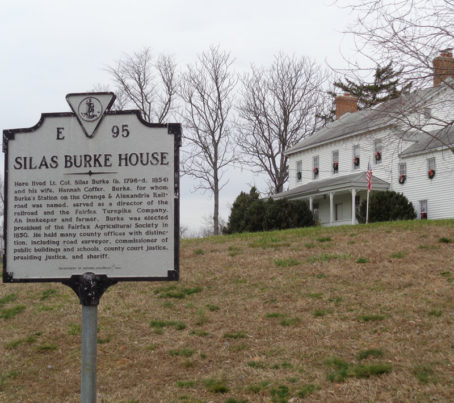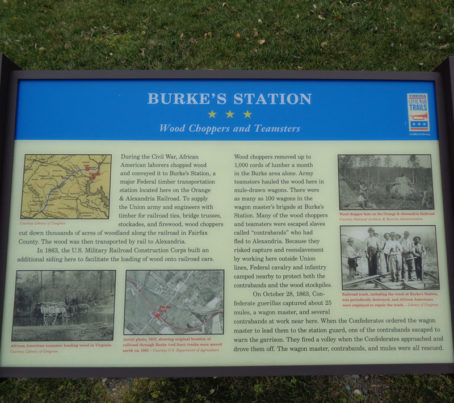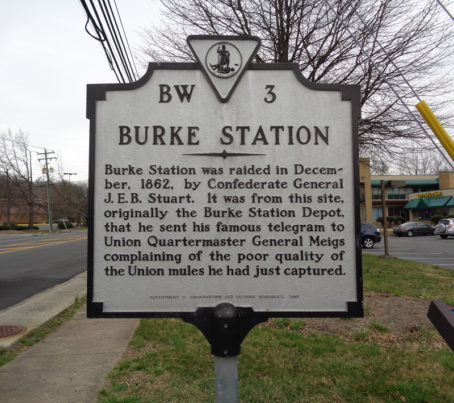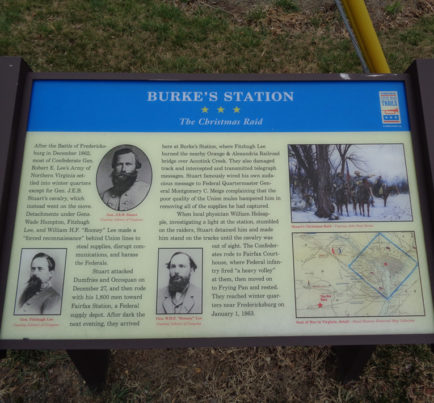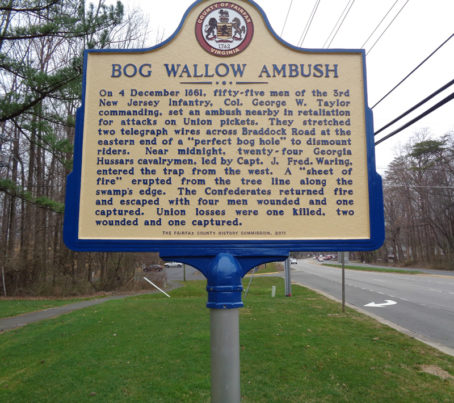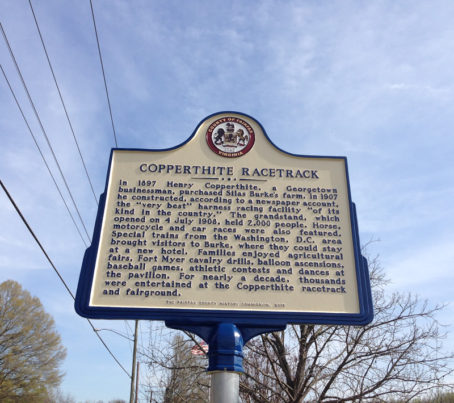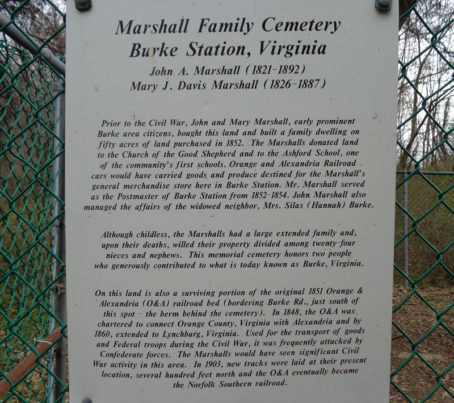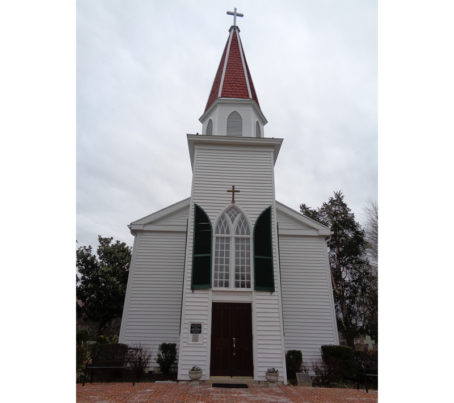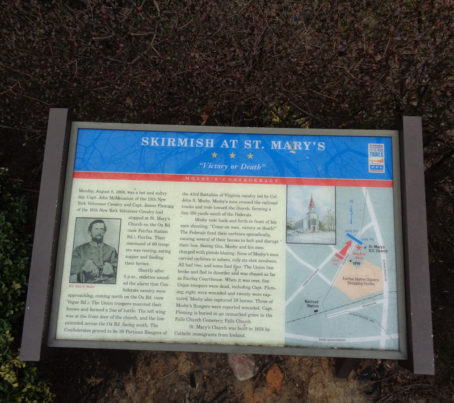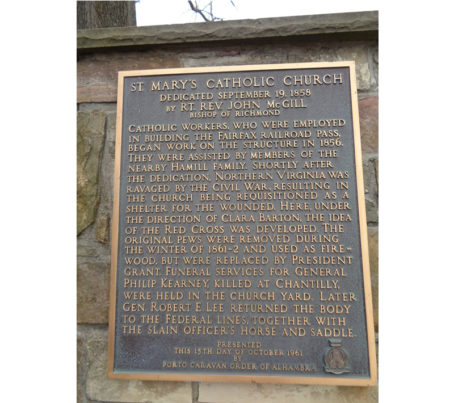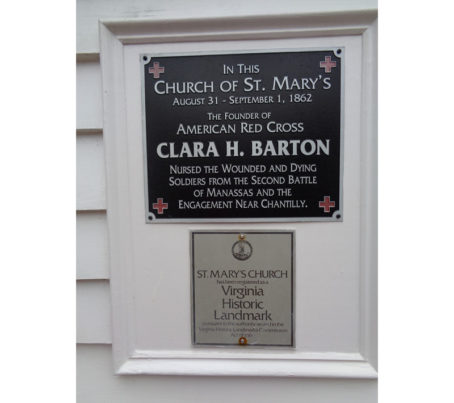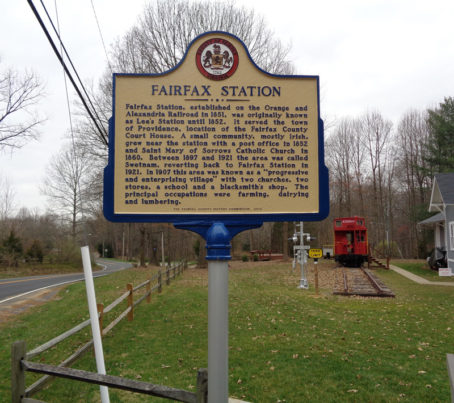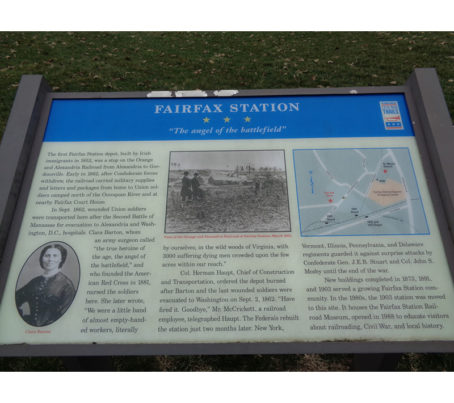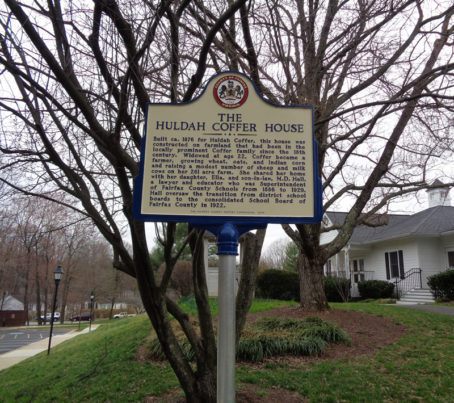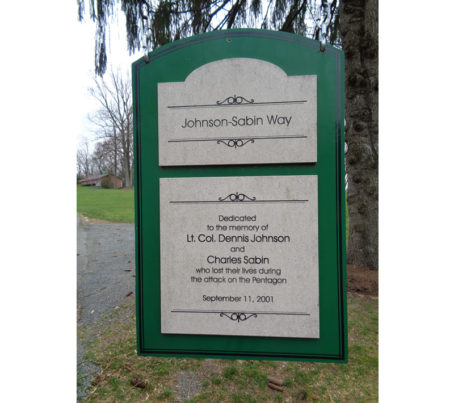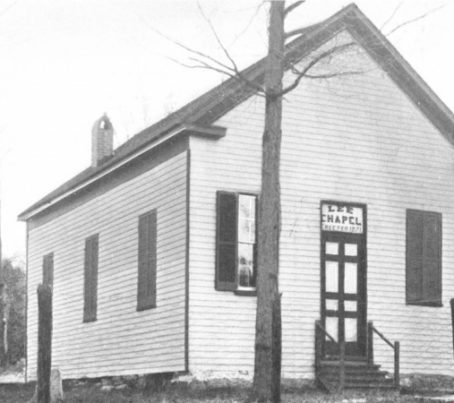This historic home at 9617 Burke Lake Rd. was the residence of Lieutenant Colonel Silas Burke, his wife Hannah Coffer Burke, and their two children, John Thomas and Ann Virginia. In the Civil War John T. Burke served as Captain of the Fairfax Rifles, 17th Virginia Co. D Infantry. Captain John T. Burke was killed at the Battle of Antietam in 1862.
Silas Burke had the house built close to the time of his marriage (1824). Burke’s many accomplishments include being a successful farmer, innkeeper, and owner of a store, grist and lumber mills, a blacksmith shop, and a brick yard. He held many county offices including chief justice of the Fairfax County court, presiding justice and county sheriff, lieutenant colonel in the county militia, commissioner of public buildings and schools, trustee, guardian and appraiser, road surveyor and President of the Fairfax Agricultural Society. Burke served as a director of the Orange and Alexandria railroad and the Fairfax Turnpike Company. Burke donated land to the Orange & Alexandria Railroad, who named a railroad station after him (“Burke’s Station,” later shortened to “Burke”). At the time of his death in September 1854, he was one of the most successful entrepreneurs in Fairfax County’s history.
The house was later the home of the Henry Copperthite family, who owned the local race track in the early 1900s. In 1925, William and Nellie Simpson purchased the Silas Burke House. While Colonel Burke called his estate “Woodbury,” the Fowler family and Simpson descendants called it “Top O’ The Hill.”
This marker, which sits outside the Burke Volunteer Fire and Rescue Department, commemorates the brave efforts of African American wood choppers and teamsters during the Civil War. The choppers and teamsters cut thousands of acres of forest along the Orange and Alexandria railroad, including Burke’s Station. The wood was taken by train to Alexandria, where it was used by the Union army for railroad ties, bridge trusses, stockades and firewood. Burke’s Station was frequently outside the Union lines, and many of the wood choppers and teamsters were escaped slaves who risked capture to work in this area. Union forces camped near the wood choppers to protect the escaped slaves. On October 28, 1863 Confederate guerillas captured some mules, a wagon master and several wood choppers, but they managed to escape.
In early December 1862, Burke’s Station was within the lines of the Union Army. At 7 PM on December 28, 1862, Confederate General J.E.B. Stuart and a few of his men quietly entered the Burke’s Station train depot and captured the Union telegraph operator before he could raise an alarm. Stuart’s telegraph operator took over the equipment, and listened to communications between Union forces in the area and Headquarters in Washington, DC. After a few hours General Stuart, feeling a bit cocky, had his telegraph operator send a message to General Meigs, Quartermaster General of the Union Army in Washington, DC, complaining that the mules his men had recently taken (stolen) from the Union Army were inferior, and asking him to please furnish better mules in the future. This marker is located in the parking lot of the Allstate office at 9415 Old Burke Lake Road.
During the Civil War, on the night of December 4, 1861, 55 men from the 3rd New Jersey Infantry literally “tripped up” a Confederate cavalry patrol. The New Jersey men stretched two telegraph wires across Braddock Road, near Burke’s Station, and waited. One wire was low, the other was at the head level of a man on horseback. Twenty-four cavalry men of the Georgia Hussars ran into the wires. Three of the Georgia Confederates were thrown from their horses, while the rest reeled about in confusion. A firefight ensued. After the melee was over, the New Jersey men had taken one Confederate, and eight horses, prisoner. Four Confederates were wounded. New Jersey’s losses were one killed, two wounded, and one captured. Today, this small skirmish is known as the “Bog Wallow Ambush.” The Fairfax County History Commission has placed a marker at the site, at Braddock Road and Dunleigh Drive.
St. Mary’s Church was built in 1858 by Irish Catholic immigrants. The Church saw action during the Civil War. On August 31 – September 1, 1862 Clara Barton (founder of the Red Cross) nursed casualties here from the Second Battle of Manassas and the Battle of Chantilly. The funeral for Union General Phillip Kearney, killed at the Battle of Chantilly, was held in the churchyard. On August 8, 1864 Confederate raider Colonel John S. Mosby engaged in a skirmish with men from the 13th and 16th New York Cavalry. The skirmish began on the church property, and ended with Mosby’s men chasing the New Yorker’s to Fairfax Courthouse (now Fairfax City). The church is located at 5612 Ox Rd., Fairfax Station.
Fairfax Station was established in 1852 as a stop on the Orange and Alexandria railroad. In September 1862, the Union Army wounded from the Second Battle of Manassas were transported to Fairfax Station and nearby St. Mary’s Church. Clara Barton, founder of the Red Cross, was here nursing the wounded. These markers are located at the Fairfax Station Railroad Museum, 11200 Fairfax Station Rd., Fairfax Station.
In 1728, the Coffer family was granted land in what is now Burke. Huldah Coffer was the wife of Joshua Coffer. Joshua Coffer’s sister, Hannah Coffer, married Silas Burke in 1824. Joshua Coffer died in 1862, leaving 22 year old Huldah Coffer a widow with 2 small children. This house, now the Woods Community Centre in the Burke Centre Conservancy, was built in 1876. Huldah Coffer lived in this home with her daughter Ella, and son-in-law M.D. Hall. M.D. Hall was a lawyer and educator who served as Superintendent of Fairfax County schools from 1886 to 1929. The house address is 10100 Wards Grove Circle, Burke.
Lee Chapel Cemetery is located at the corner of Lee Chapel Road and the Fairfax County Parkway. Lee Chapel, a 24’ x 40’ white frame church, was built in 1871. For many years it was the center of worship and fellowship for many of the oldest families of Fairfax County. The first recorded burials at the site took place in 1887. This Methodist Episcopal Church was closed due to decreased attendance and transportation challenges from 1928 to 1939. It was reopened to serve the new families moving into the area.
The original plans to build the Burke Airport (Dulles Airport) in this area forced the church to close for a final time in 1951. The church was vandalized after its closing and was ultimately destroyed by controlled burning. In the late 1980’s the original plans for the Fairfax County Parkway would have routed the road through the cemetery. In 1988, those plans were changed and the cemetery was saved. In 2017, an Easter sunrise service was held at the site of the church.
An excellent website now documents the history of the chapel: http://www.leechapelburke.org/
